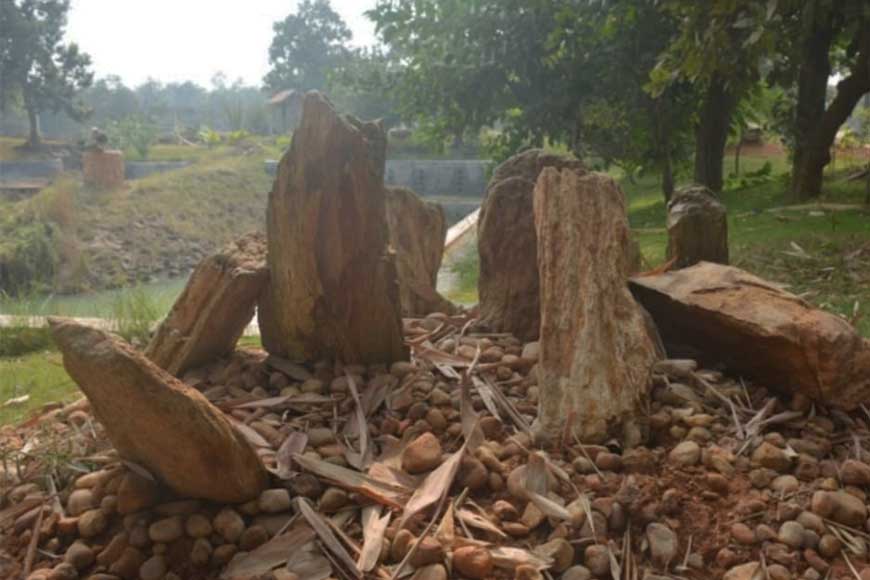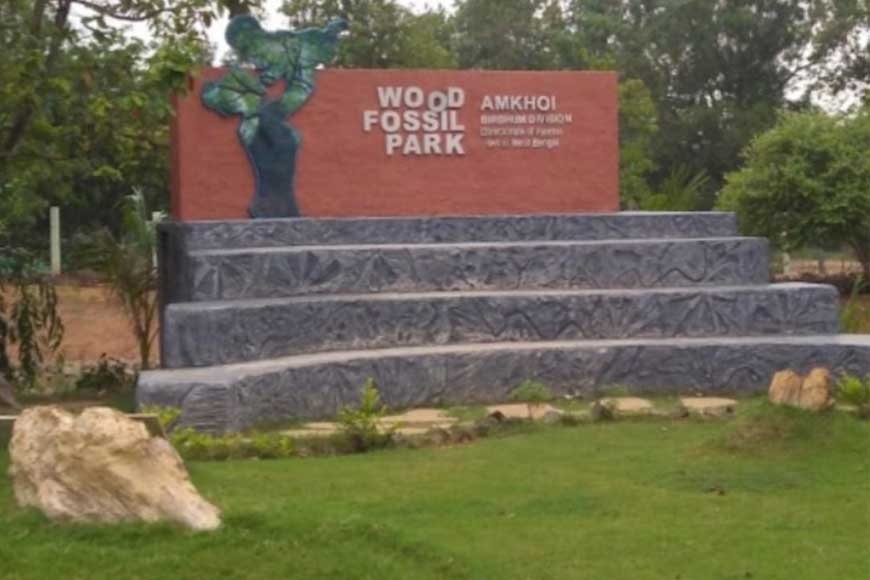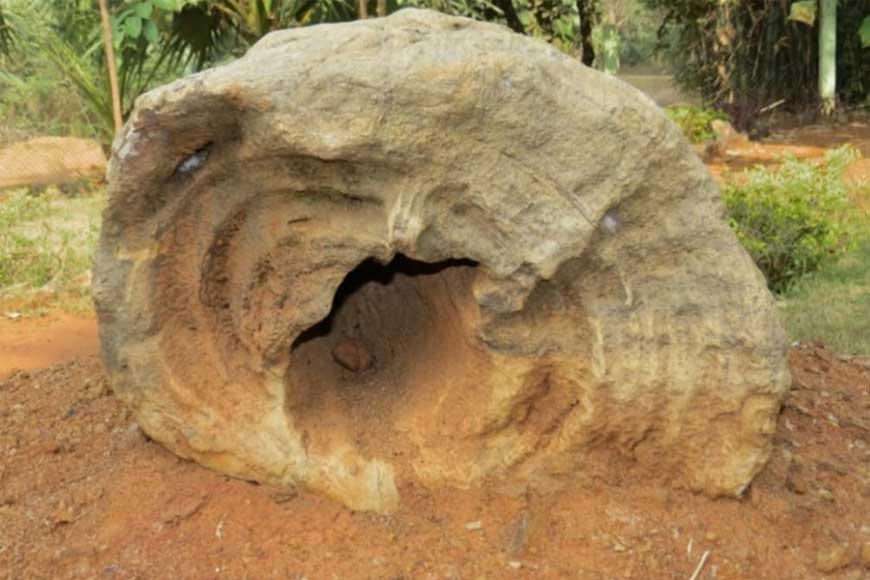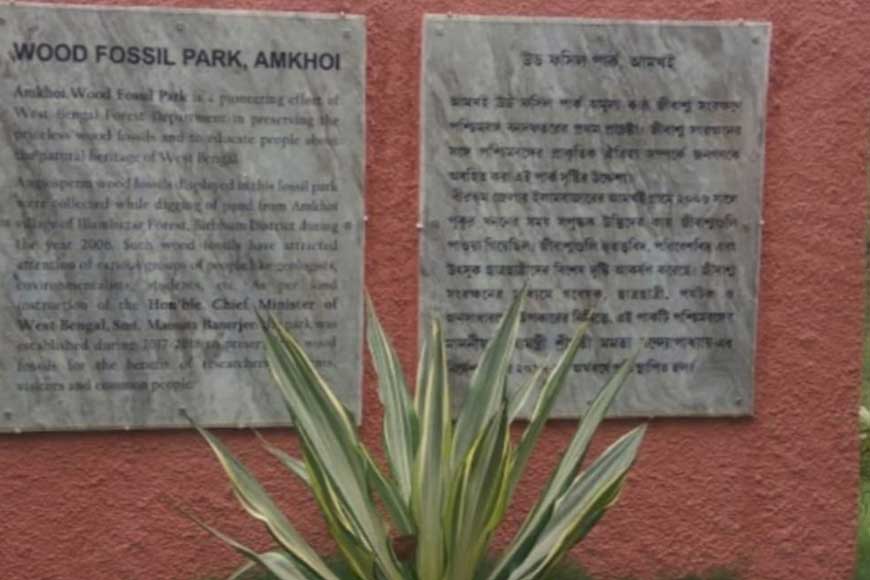West Bengal’s only fossil park, a storehouse of its natural heritage

Close to Santiniketan in West Bengal’s Birbhum district, the village of Mahishdal has rail tracks running along one of its boundaries. Nearly two decades ago, as maintenance work began on the rail bridge over the river Kopai, a little digging revealed a treasure trove of ancient archaeological remains. Acceding to the local administration’s request, the Railways agreed to stop digging further in that particular area. A little farther on at Paruldanga, the late professor Subrata Basu, who taught at Visva Bharati, discovered a rich hoard of similar treasures from a few mounds adjoining the village.

Again, the late researcher Arun Choudhury of Birbhum travelled around the areas of Rajnagar, Labhpur, and Ilambazar, all within the district, to unearth what are called ‘wood fossils’ from various time periods, and his finds were so many that the shelves at the district information department overflowed with them. In response to invitations from the district administration, experts from the Geological Survey and Archaeological Survey of India who studied the fossils at the time said that the blackish-yellow remnants were a few million years old. And many more such priceless examples keep cropping up in various parts of Birbhum even today.
According to information released by the office of the Divisional Forest Officer, Birbhum, “Wood fossil is defined as woods preserved by natural process in the earth’s crust millions of years back. Fossils are usually found in sedimentary rocks. The essential factors for fossilisation are a rapid burial under sediment cover and protection from decay by oxygen and organisms in an anaerobic condition.”
Late researcher Arun Choudhury of Birbhum travelled around the areas of Rajnagar, Labhpur, and Ilambazar, all within the district, to unearth what are called ‘wood fossils’ from various time periods, and his finds were so many that the shelves at the district information department overflowed with them.
There are two broad theories about the discoveries. One, what is today Birbhum may once have been an ancient settlement that was destroyed by an earthquake or some other natural disaster. That would explain the archaeological finds. Two, the fossils are clearly remains of trees and plants which perished millions of years ago, but have been preserved by remaining buried under several layers of earth and stones, eventually becoming calcified.

A few years ago, while attempting to dig a pond in Ilambazar’s Bananchal area, local residents found numerous wood fossil samples, and these were brought, in as undamaged a state as possible, to Amkhoi village. And it is here that the fossils have been assembled to form a Fossil Park, a sure shot attraction for many researchers and history enthusiasts, where the priceless artefacts are safe from thieves and vandals.
En route from Bananchal to Bolpur, a detour to the right leads to Amkhoi village, where local residents, under the supervision of the Panchayat and district administration, look after the Amkhoi Fossil Park.
En route from Bananchal to Bolpur, a detour to the right leads to Amkhoi village, where local residents, under the supervision of the Panchayat and district administration, look after the Amkhoi Fossil Park. And it isn’t just a pretty little tourist attraction either. It offers visitors a chance to be a part of living history, and several are taking it. There is a separate space for students to add to their knowledge of both nature and history.
As of now, Amkhoi Fossil Park contains fossilised wood that is between 15 and 20 million years old, and it is officially recognised by the Forest Department of West Bengal as the ‘Amkhoi Fossil Park Eco-Tourism Project’. It is currently the only fossil park in the state, and covers an area of roughly 10 hectares.
Amkhoi Fossil Park contains fossilised wood that is between 15 and 20 million years old, and it is officially recognised by the Forest Department of West Bengal as the ‘Amkhoi Fossil Park Eco-Tourism Project’.
What has excited many experts is the fact that the specimens at the park are definitive proof that a vast dry deciduous (trees which shed their leaves annually) forest with a few evergreen species existed in this area. This ancient forest covered the uplands of the Rajmahal Hills and Chhotanagpur Plateau in the northwest of Birbhum. Presumably, the trees were carried by the occasional floods of the local river system, flowing from the river basin’s northwest areas toward the southeast, in Birbhum, Bardhaman, Bankura and Medinipur districts, and were deposited under fine sand and clay, gradually transforming into wood fossils.

The locals are keen to do a lot more with these incredible bits of West Bengal’s natural heritage, but would like historians and researchers to come forward, too, so that the park can avail the services of competent guides to show visitors around, for instance. The wealth the villagers are guarding is for all, they say, and they see it as their gift for future generations.
Approximately 15 km from Bolpur, the park is easily accessible from Santiniketan too.










